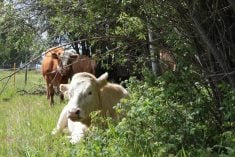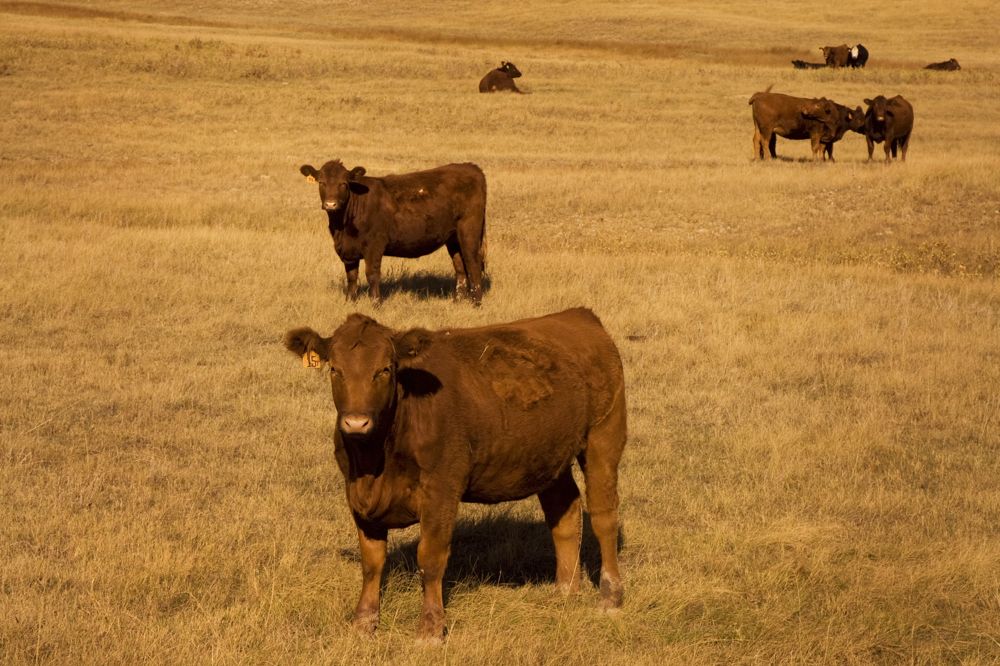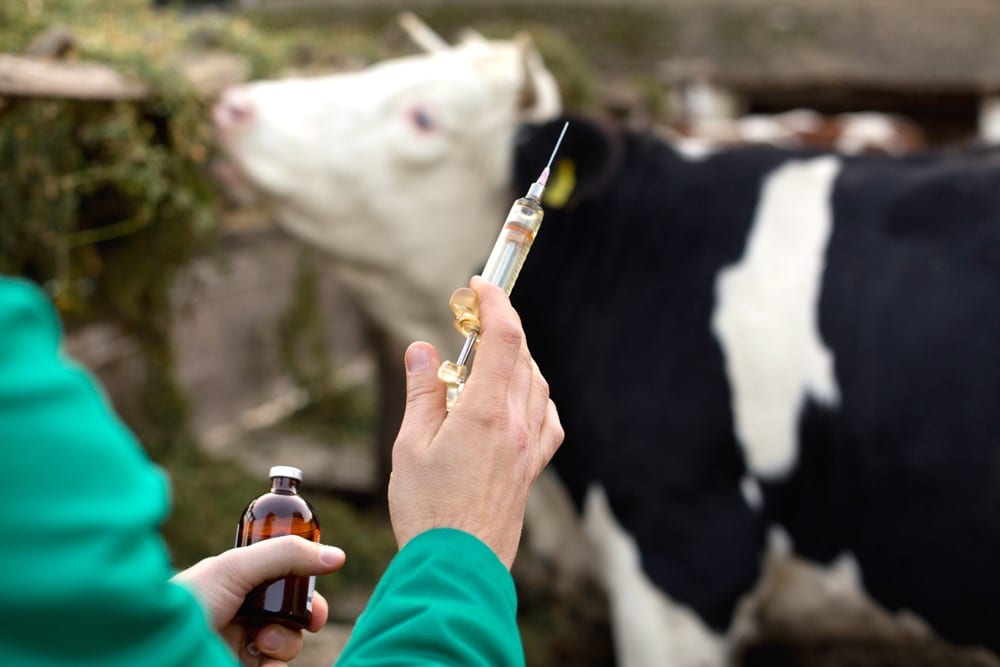In talking with other veterinarians it is amazing how variable the prevalence of a specific disease can be between geographic areas. We always think of the huge difference between warm climates and colder, more temperate climates. Sometimes these differences can be as close as a one-hour drive in the same province.
This becomes critical when cattle are transported over large distances such as moving to summer pastures. Producers should have a good working relationship with the veterinarians in both regions as certain large differences may exist with regards to animal health. The big difference in the clostridial diseases more specifically Bacillary hemoglobinuria (redwater) is a good example.
Read Also

Harvest wraps up and fall work begins
At the Eppich famly ranch in western Saskatchewan, the fall harvest was successful with few breakdowns, cows and calves have been sorted and a new tractor has arrived
Redwater will most often cause a sudden death due to toxins produced by the bacteria and occurs primarily in the summer and autumn pasture seasons. It has been reported commonly in cattle and also is prevalent in game-farmed animals such as bison and elk in the endemic areas. It is less common in sheep. Its spread is commonly by water systems through flooding or drainage. Movement of contaminated hay has been incriminated and carrier animals such as coyotes may spread it from predating on carcasses killed by the disease. It is best to burn or bury the carcasses deep if redwater is suspected. Have your veterinarian perform an autopsy on sudden deaths or check an animal clinically if the urine is red. There are several diseases causing red urine which we must differentiate as each problem carries a different treatment regime.
Covered in eight-way vaccines
Clostridium hemolyticum is often the last fraction in the blackleg vaccines, which is added into a seven-way vaccine to make it an eight-way vaccine. In areas where it is prevalent routine vaccinations at six month intervals may even be necessary for prevention.
The toxin causes red blood cells to burst, which is why you get hemoglobin contained in the red blood cells showing up as a red colored urine — hence the name red water. In some cases if caught early, treatment in the form of large doses of penicillin may prove successful. Most often the only sign is sudden death and an autopsy will hopefully confirm what you are dealing with.
Certain areas in Alberta especially in west central Alberta (eastern slopes of the Rockies) can have a high incidence and on infected farms death losses can vary from five to 20 per cent if susceptible cattle are not protected. These specific geographic areas have large tracts of land where cattle are pastured from other areas. These cattle may not be protected if coming from areas where redwater is not a problem.
In my former practice area north of Edmonton, for instance, we have only seen very sporadic cases in the last several years although the incidence is increasing somewhat. Our standard recommendation is to use a nine-way vaccine (covexin-plus) because we do see tetanus as well especially with banding calves. Tetanus incidence will increase with the use of banders for castration or the use of dirty needles for vaccinating. Our protocol is to typically have all cattle vaccinated two times for feedlot animals and three times for replacement heifers by the time they are bred. This will give a very long immunity for most clostridial diseases. This however is not the case for redwater.
In areas where redwater is prevalent cattle bison and elk must be vaccinated at least yearly and if a real problem with specific herds twice yearly. Ideally the shot should be given two to three weeks before the maximum exposure occurs. Otherwise deaths will most definitely be experienced. This is a huge difference in protocols and if one is moving cattle great distances a very important fact to know.
Read the labels
Some cattle are vaccinated with seven-way vaccine and have absolutely zero protection against redwater. In other areas of the province we see every six-month vaccination with a vaccine protective against redwater necessary to maintain protection. If one reads the labels of these vaccines carefully we see it is clearly stated if a problem with redwater exists at least annual vaccination is recommended. It also states if a problem exists a twice yearly vaccination may be necessary. The good news is most producers can work this into their management schemes and process when other things are administered. If vaccines for the reproductive diseases are given in the spring a multivalent clostridial vaccine containing hemolyticum can be administered at the same time. This is very cheap insurance as the clostridial vaccines are the cheapest vaccines on the market today.
Another issue, which predisposes cattle to redwater, is liver flukes. If liver flukes have been a problem in your area as they currently are in specific regions of Manitoba make sure their Clostridium hemolyticum (redwater) vaccines are up to date. The liver flukes live in and damage the liver making the likelihood of contracting the disease that much greater. This is again an example of specific areas having a condition, which increases the likelihood of another disease increasing (liver flukes leading to redwater).














